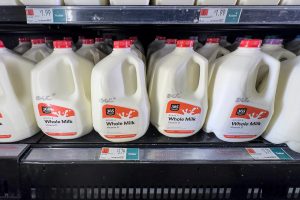
“We used to live in a more supply-driven marketplace where there was a surplus of product, and that’s what we were able to export overseas,” says Megan Sheets, senior director of the U.S. Dairy Export Council. “Today, we are seeing a shift to a demand-driven market. By understanding what’s important to consumers, we need to look at the global market, which is fundamental and pivotal to our ability to grow American dairy exports overseas.”
A large part of the demand comes from China, Mexico, and Southeast Asia, which have a spectrum of favorites such as skim milk, powder milk, non-fat dry milk, dry whey, and cheese.
CRAVINGS OF COMFORT FOOD
Why do consumers gravitate toward these products?
It’s the quest for taste and comfort, says Sheets. Being in a pandemic for two years has changed consumers’ behaviors. The pandemic also made them uncomfortable. Consumers are reaching for products that deliver on taste or provide a source of relaxation.
“Change is hard. It’s no surprise consumers across the globe and in every market are turning to taste and enjoyment to find moments of comfort with food and beverage,” Sheets says.
Across the globe, the product consumers seek out consistently is cheese, which has been a popular comfort food during the pandemic. By conducting ethnography, an observation study of consumers within their homes, the U.S. Dairy Export Council discovered what qualities of American cheese stand out to Saudi Arabia and South Korean consumers.
The study found that consumers have diverse perspectives on what constitutes a great-tasting cheese. Saudi Arabians prefer a variety of processed, jarred, or canned cheese with a balance of sweet and sour flavor notes. Consumers also noted that bitter cheese could be medicinal. South Koreans were the opposite; they looked for milky and fresh-tasting cheeses.
“We found that color is important because white symbolizes the freshness of ingredients,” says Sheets. “In South Korea, they like soft white cheeses that have a balanced taste profile.”
The study also showed that consumers will splurge on certain foods such as high-quality cheese. Consumers view cheese as an allowed indulgence in their diets. According to experts, 88% of consumers say a balanced diet can include a little luxury, such as cheese.
“The consumer perception is ‘we’re including this healthy amount of indulgence in our diet’, which fuels demand and consumption of three big categories: dairy, confectionery, and bakery products. And we can’t talk about good taste without bringing up dairy fats,” Sheet says.
Dairy fats such as butter cream and whole milk powder align with consumers’ interest in having luxury food goods included in a healthy and balanced diet.
“This forecasting growth says that consumers are not only interested in dairy fats but also want to enjoy their lifestyles along with their food and beverage choices,” says Sheets.
THE BUYING POWER OF NUTRITION
Experts forecast that nutrition will remain a driver for consumers’ decisions with food because many are using it to manage their stress levels and to plan for long-term health goals. Consumers are also beginning to view animal proteins as health attributes that benefit nutrition.
The U.S. Dairy Export Council projects that in the next five years, the demand for high-quality animal proteins will continue to grow as our population expands, says Sheets.
“Consumers who eat proteins think this is good for their immune system, muscle health, overall well-being, and energy levels. So there’s a lot of buy-in to the importance of consuming proteins,” Sheets says.
Animal proteins haven’t outpaced plant-based dairy products in the perception of health, but the full flavor of animal proteins does beat out plant-based dairy products with taste preference. In addition, consumers favor whey-protein shakes and snacks on the market and yogurts, especially drinkable yogurts, as consumers return to an “on-the-go” lifestyle.
This progressive and positive global demand for American dairy has also had its fair share of challenges, from inflation to logistic issues, in 2022. However, Sheets believes global exports of U.S. dairy will remain strong because foreign consumers prefer the taste of American dairy products over other global competitors’ dairy products.
“U.S. dairy is well positioned to build out a future we desire, on behalf of dairy farmers, and as a global supplier of choice in the future,” says Sheets.

























